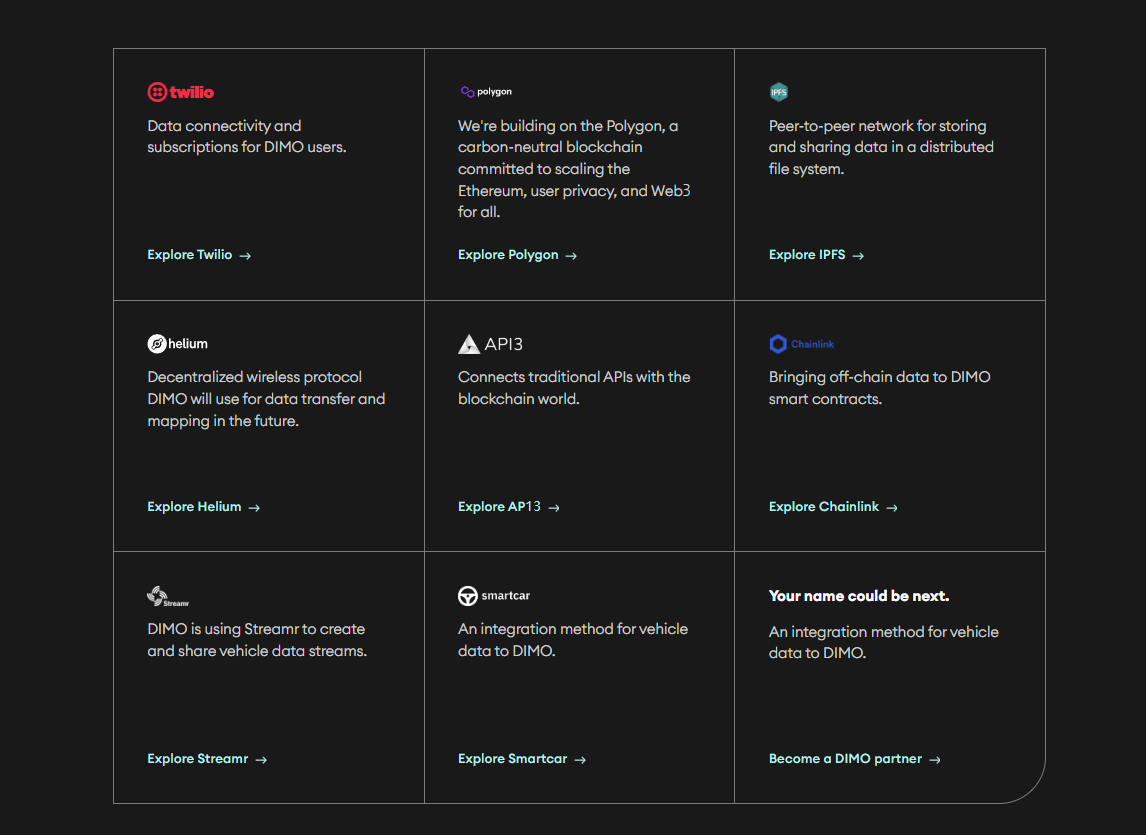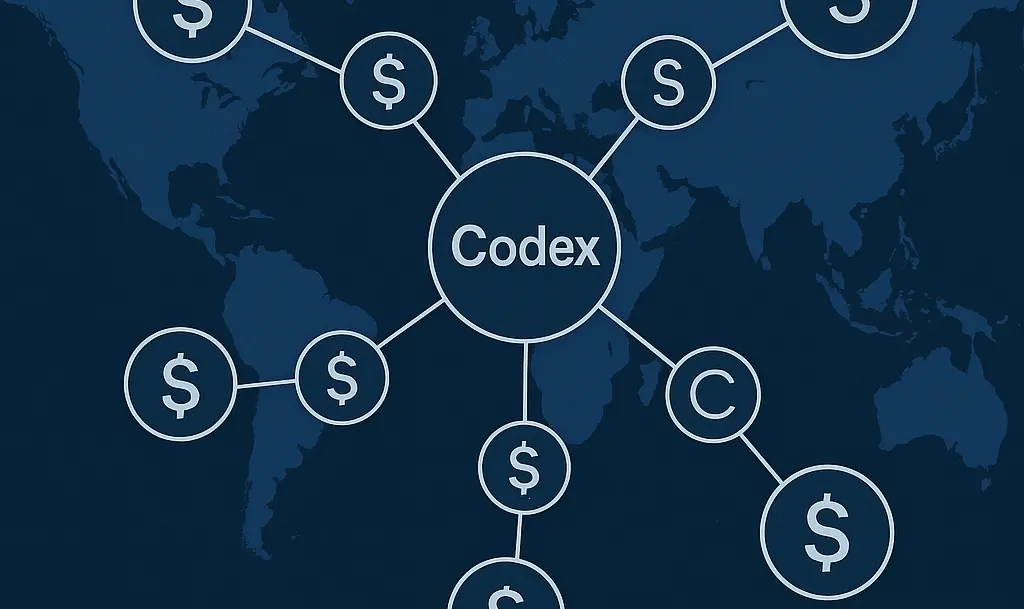Interpreting DIMO: Targeting a trillion-dollar market, reshaping the automotive data monetization ecosystem with DePin
Written by: Xu, Deep Tide TechFlow
Edited by: 0xxx
Recently, with the soaring popularity of $Honey and $Mobile, DePIN has once again become a hot topic of interest. At the end of 2022, Messari introduced the term "DePin," which stands for "decentralized physical infrastructure network," aiming to consolidate dispersed physical machine network resources through a token incentive mechanism.
In 2023, the DePin sector has performed exceptionally well. According to Coinmarketcap data, the total market capitalization of the DePin sector has approached $19.4 billion, with significant token price increases. Besides $Honey and $Mobile in the Solana ecosystem, what other DePin projects are worth focusing on?
This article will introduce Dimo, a DePin application focused on the management and application of vehicle data, allowing users to earn money by connecting hardware devices to their cars and sharing data.
Project Overview
Dimo is an automotive IoT platform built on Polygon that enables drivers to collect and share their vehicle data. The recorded data includes mileage, speed, location tracking, tire pressure, battery/engine health, and more.
By analyzing vehicle data, the Dimo platform can predict when maintenance is needed and timely remind users. This way, drivers not only gain insights into their vehicles but can also contribute data to Dimo's ecosystem, earning DIMO tokens as rewards, Drive-to-Earn.
You might wonder, based on past experiences of being exploited, that most "xxx to earn" projects often turn out to be Ponzi schemes, with once-spectacular fireworks displays that end up in chaos. How does DIMO create positive externalities? This may be the unique aspect of the new generation of DePIN, which connects real-world needs to find positive externalities for the ecosystem, meaning it has a real source of profit. DIMO targets a large market. According to the National Automobile Dealers Association, total sales of all new light vehicles in 2021 exceeded $1.18 trillion, while the U.S. used car market is more than three times that size, and the automotive insurance market is valued at approximately $317 billion. Cars are gradually entering the era of electric intelligence, transforming from mere mechanical products into technological products, and automotive data has become a treasure trove.
Currently, there are about 250 million connected cars globally, and the data generated is controlled by traditional automotive manufacturers. Original Equipment Manufacturers (OEMs) often sell various data generated by cars, such as battery health information, while Amazon, Apple, and Google are striving to embed their software into vehicles and attempt to gain user data.
This has also spawned a number of third-party automotive data startups, such as Otonomo and Wejo. Otonomo collects automotive data, standardizes it, and then provides it to car manufacturers. It went public in 2021 through a SPAC merger.
In short, the monetization of automotive data already has a mature business model. McKinsey researchers predict that by 2030, the overall profit from global automotive data monetization will reach $450 billion to $700 billion.
What DIMO aims to do is to empower users to take control of their vehicle data, becoming the "owners of their cars," and thus earn revenue from the data generated.
At first glance, DIMO and Hivemapper have similarities, both belonging to Drive to Earn. The difference is that DIMO connects the car with the driver, monetizing driving data based on the effective usage time of the owner and the connectivity of the device, while Hivemapper is a blockchain-based mapping network that incentivizes users to collect mapping data through driving.
Project Official Website: https://dimo.zone/app?
Official Twitter: https://twitter.com/DIMO_Network
How the Project Works
1. Connect Dimo AutoPi to the User's Car
Apart from Tesla users who can download the Dimo app from the App Store to connect with Dimo, users of other car brands need to purchase a hardware device called AutoPi (currently priced at $299) to connect with Dimo. This device is compatible with all cars manufactured in 2008 and later.
Once the AutoPi device is connected to the user's car, it can monitor vehicle performance and health data in real-time, including tire pressure, mileage, and more.

2. Earn DIMO Token Rewards
Users can earn DIMO tokens in two ways:
Baseline Issuance Rewards: This is based on the user's (i.e., driver's) connection time and method. This approach aims to build a network by incentivizing drivers to connect their vehicles and transmit data, thereby rewarding users who support DIMO in the long term and encouraging continuous data connectivity.
Market Issuance Rewards: When users transact with authorized DIMO applications, they receive additional DIMO tokens. As long as the rewards are issued in DIMO, the quantity and terms of the rewards are specified by the application developers.

Project Team and Funding Situation
Team Members
- Andy Chatham, Co-founder of Dimo and CEO of Digital Infrastructure.

- Alex Rawitz, Co-founder of DIMO and COO and Co-founder of Digital Infrastructure.

- Rob Solomon, Co-founder of DIMO, formerly CFO of ConsenSys Mesh.

Funding Situation
Dimo received $9 million in investment on February 17, 2022. The round and valuation details were not disclosed, with investors including CoinFund, Variant Fund, Slow Ventures, and more than ten other institutions and individuals.
Token Economics ($DIMO)
Introduction to $DIMO
$DIMO is the native token of the Dimo network, issued to users and contributors. Users can earn $DIMO by linking their cars to the Dimo network. $DIMO mainly serves the following four purposes:
Transaction Needs: Token holders can buy and sell vehicle data using $DIMO and can also purchase Dimo AutoPi connection devices.
Governance Rights: $DIMO token holders can vote on how the protocol operates, including but not limited to software code upgrades, protocols, and standards; how fees are generated, how rewards are distributed, etc.
Incentive Role: $DIMO can be used to incentivize ecosystem participants. Business participants, such as car owners, data providers, application developers, etc., need to use $DIMO for staking or consumption to participate in the ecosystem.
Indicating Community Belonging: Token holders can gain access to special application features and events.
Token Distribution
The total supply of tokens is 1 billion, with the detailed distribution mechanism as follows:
Baseline issuance accounts for 38%, with 380 million $DIMO to be distributed over 40 years, starting with 1,105,000 $DIMO issued weekly to users in the first year, with the issuance decreasing by 15% each year;
Dimo treasury accounts for 22%, with teams and individuals contributing to the network potentially receiving $DIMO in the form of bounties or grants;
Team accounts for 22%, with token distribution subject to a two-year lock-up, followed by monthly linear unlocking until fully unlocked after three years;
Investors account for 8%, with token distribution also subject to a two-year lock-up, followed by monthly linear unlocking until fully unlocked after three years;
Airdrop accounts for 7%;

Current Development Status of Dimo
Web2 Partnerships
As of the time of writing, Dimo has established partnerships with nine Web2 companies, including dealers, ecosystem partners, and more.
These merchants (such as gas stations, repair shops, and auto parts stores) are part of the Dimo network, where users can use DIMO tokens to purchase services.

Web3 Partnerships
Currently, Dimo has formed partnerships with eight Web3 projects, including Polygon, Chainlink, and others.

Latest Project Updates
On December 13, 2022, Dimo's mainnet was launched. As of December 13, 2023, marking the first anniversary of the mainnet launch, the project has achieved remarkable results:
- Nearly 28,000 vehicles have been connected to the Dimo network (only 1,400 at the mainnet launch), with users accumulating over 153 million kilometers driven.

- Dimo's users are distributed across more than 81 countries/regions, with users from the U.S. and the U.K. making up the majority.

Over 57 million $DIMO tokens have been distributed to users, valued at approximately $13 million.
The connected vehicles on the Dimo network vary greatly in value, with the cheapest car worth only $2,300 and the most expensive reaching $410,000. If the estimated value of each car on the Dimo network is summed up, it totals over $750 million!
A total of 71 different car brands have been connected to Dimo, with the top three being Tesla, Ford, and BMW.

Conclusion
It has always been believed that Web3 is pursuing "mass adoption," or true large-scale application, with some hoping for it in gaming or social media, while DIMO and other DePIN projects have opened another path by connecting the physical hardware to the crypto world and the real world.
At the intersection of Web3 and automobiles, Dimo empowers drivers with control over their vehicle data, enhancing personal privacy and data security while opening new avenues for automotive data sharing and utilization.
As the DePin sector continues to grow and the user base expands, Dimo is expected to become an important bridge linking vehicles, data, and humans. This innovation not only drives technological advancement but, more importantly, promotes a shift in social value, allowing everyone to benefit from their own data, truly realizing the democratization of data.








